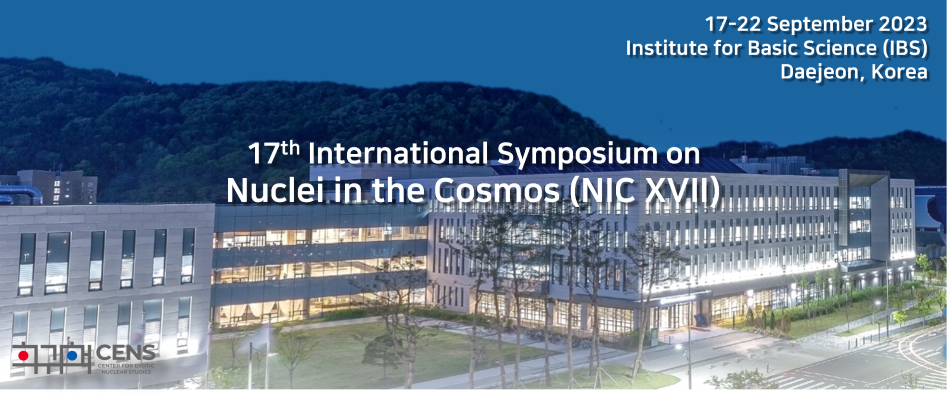Speaker
Description
To constrain the nu-p process, we studied the $^{56}$Ni(n,p) reaction by directly measuring the cross section on the radioactive $^{56}$Ni (a half-life of 6 days) at Los Alamos Neutron Science Center. This reaction has been identified as one of critical reactions for understanding the heavy element production in core-collapse supernovae. The radioactive $^{56}$Ni was produced by irradiating protons on a $^{59}$Co foil via the (p,4n) reaction at the Isotope Production Facility and the $^{56}$Ni target was chemically separated, fabricated, and characterized at the Hot Cell facility. Using the LENZ (Low Energy NZ) instrument, the first directly measured cross sections of $^{56,59}$Ni(n,p), $^{56}$Co(n,p), and $^{59}$Ni(n,$\alpha$) will be reported along with experimentally deduced reaction rates of $^{56}$Ni(n,p) and $^{56}$Co(n,p). The impacts of these newly obtained reaction rates and potential further constrains on the nu-p process will be discussed. Ongoing LENZ efforts on (n,p) and (n,$\alpha$) reaction studies with radionuclides such as $^{40}$K, $^{44}$Ti, and $^{26}$Al, and the optimized solenoidal spectrometer development at LANSCE will be presented.
This work benefits from the LANSCE accelerator facility and is supported by the U.S. Department of Energy under contracts DE-AC52-06NA25396, the Laboratory Directed Research and Development program of Los Alamos National Laboratory under project number 20180228ER, and the U.S. Department of Energy Office of Science-Nuclear Physics.
LA-UR-23-25925

